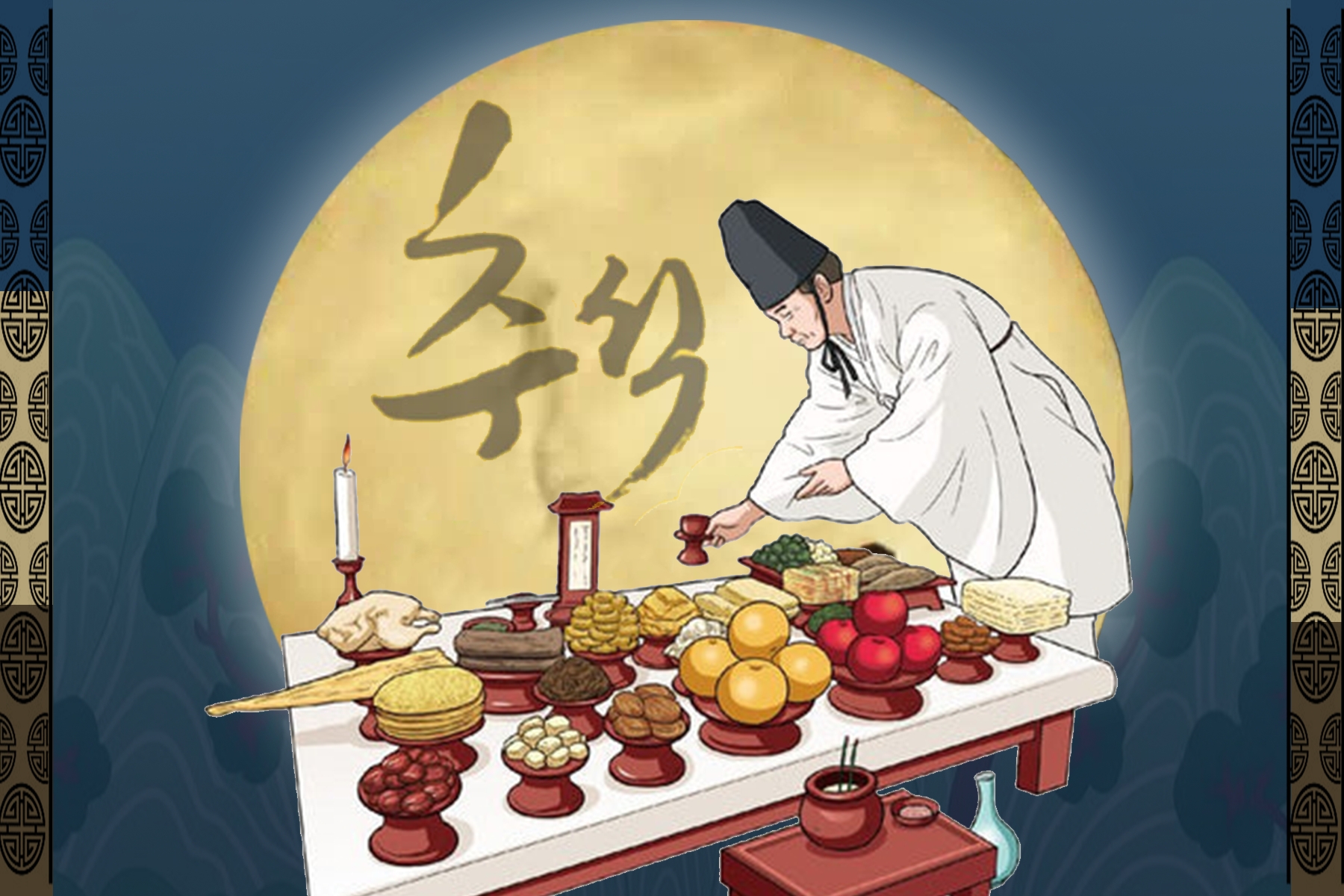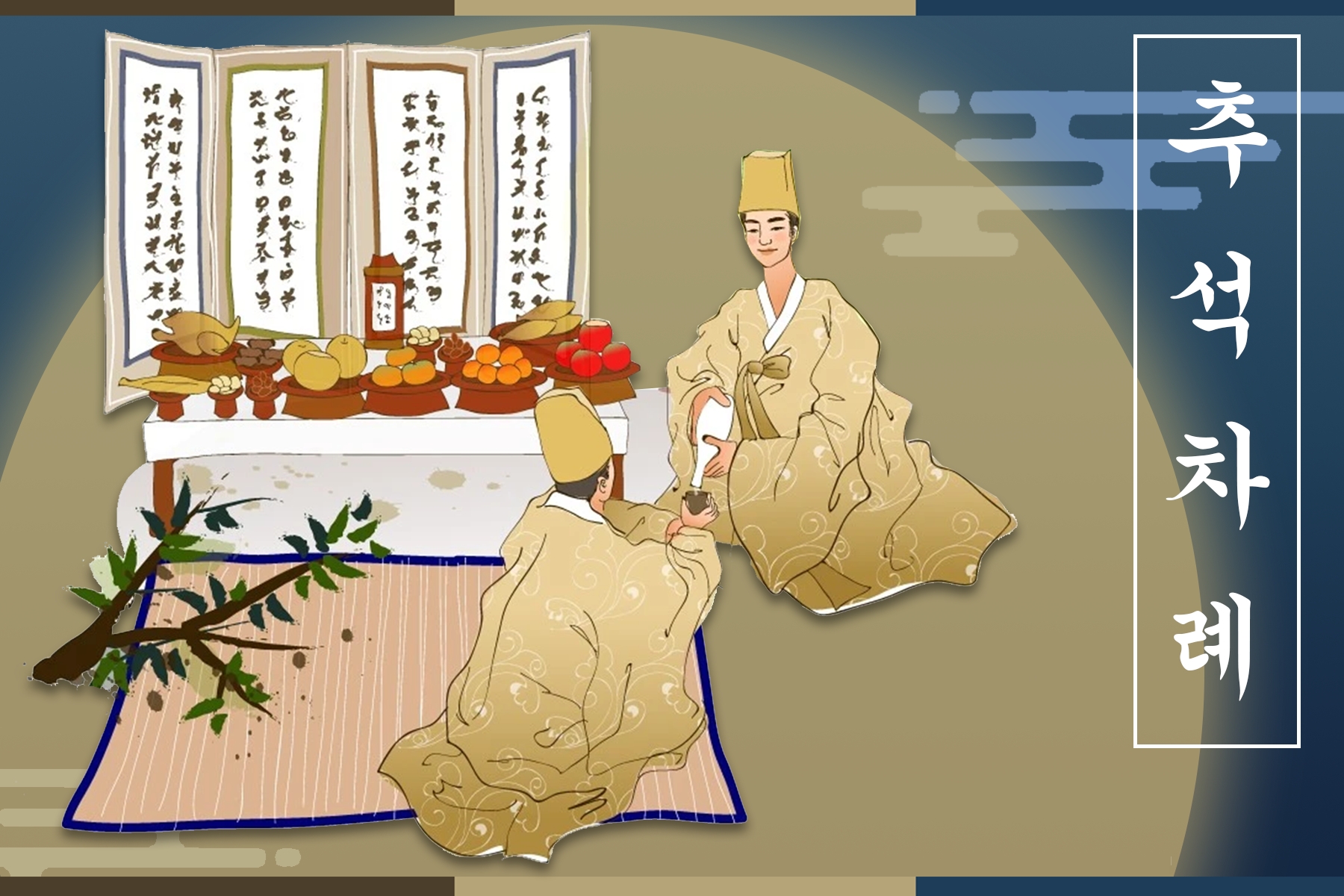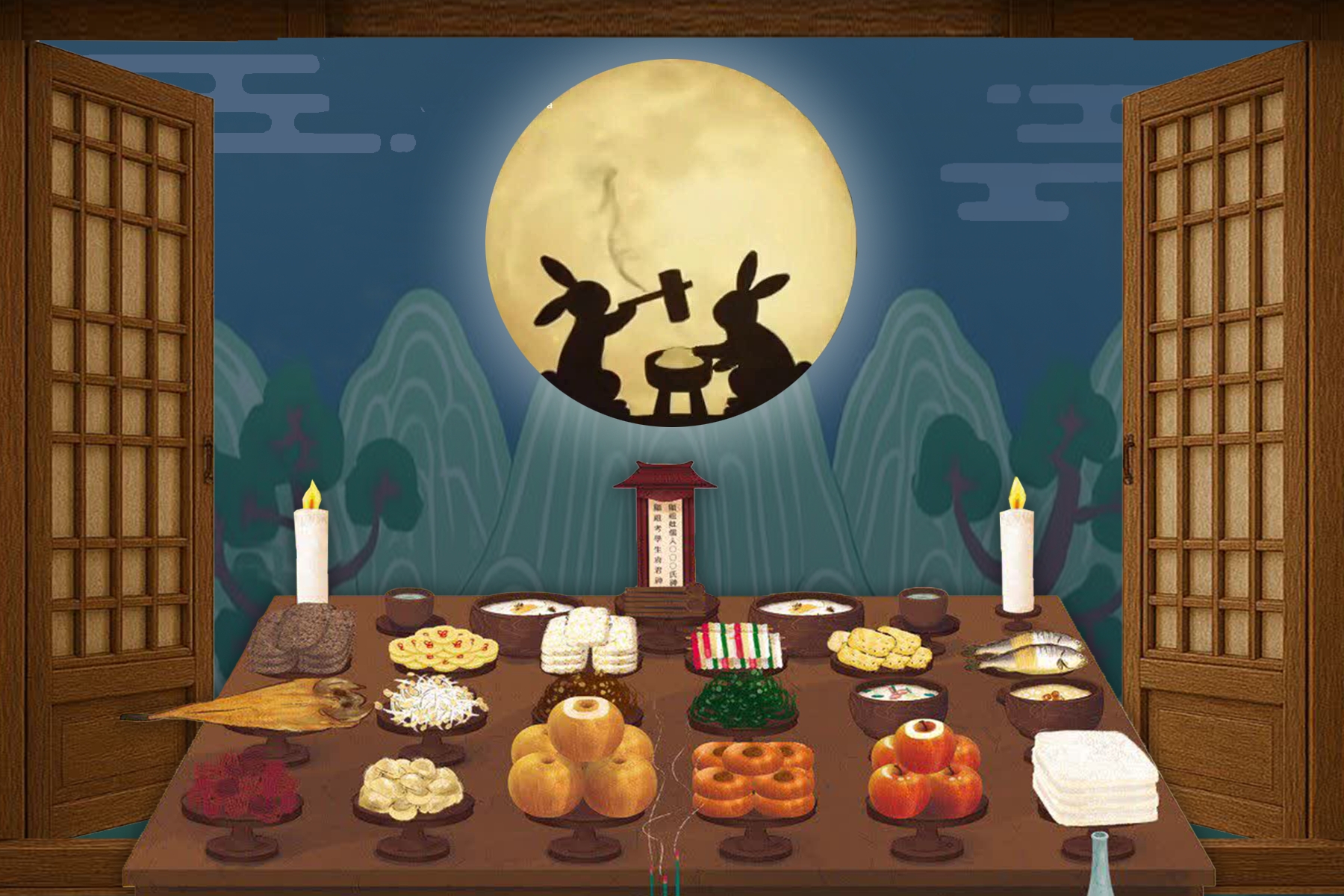
A Celebration of Life, a Whisper of Loss
Every autumn, as rice fields turn gold and the air grows crisp, families across Korea prepare for Chuseok(추석), the harvest festival that respects ancestors and celebrates life's abundance. For most, it is a time of reunion, laughter, and gratitude. Even from afar, I can almost imagine the warm gatherings and laughter filling Korean homes. Yet behind the joy lies something quieter, the soft ache of memory and time passing.
As a psychology student observing Korean culture from afar, I find this balance deeply moving. Through my Korean friends, I’ve learned that Chuseok(추석), while festive, carries emotional layers that reveal a profound truth about the human experience: life and death, joy and sorrow, are not opposites; they coexist. This harmony between contrasts reflects what psychologists call emotional dialecticism, and it beautifully mirrors the essence of Korea’s cultural soul.
Honoring the Past: The Presence of the Absent
One of the most touching traditions of Chuseok(추석) is Charye(차례), the ancestral memorial rite. Families prepare special foods and set them before portraits or spirit tablets, bowing in gratitude to those who came before them. In psychology, this can be seen as a way of finding meaning in the face of mortality.
In existential thought, to live authentically is to live with the awareness of death, not in fear, but in acknowledgment that life is precious precisely because it is finite. During Chuseok(추석), death is not hidden or avoided; it is gently invited to the table. Families remember their ancestors not as distant figures, but as continuing presences intertwined into daily life.
This acceptance of mortality, rather than denial, creates a paradoxical calm. It is a reminder that love transcends time, and that remembering the dead can make the living more grateful, more connected, and more alive. To me, that gentle acceptance of mortality feels both humbling and comforting.

The Coexistence of Joy and Sorrow
In Korean psychology and culture, there is a word that captures the emotional complexity of Chuseok(추석): Han(한). It describes a deep feeling of sorrow, longing, and hope; a recognition that beauty often lives alongside pain. Han is not purely sadness; it is sorrow softened by love and endurance.
Psychologists describe this ability to hold two emotions at once is called emotional dialecticism, and it lies at the heart of how many Koreans experience Chuseok(추석). Rather than choosing between happiness or grief, people experience both and find balance in their coexistence. During Chuseok(추석), joy and sorrow mingle naturally. There is laughter over shared meals, but sometimes a quiet tear when an empty chair at the table stays unfilled.
This emotional blending, I think, can be deeply healing. Studies show that people who can embrace mixed emotions have greater emotional resilience and empathy. By acknowledging sadness, we make space for deeper joy; by remembering loss, we appreciate life’s fleeting beauty. Chuseok(추석) offers Koreans, and all of us, a living example of this emotional wisdom.
Existential Meaning: Life in the Shadow of Time
Beyond its beauty as a cultural tradition, Chuseok(추석) also carries an existential message. Existential psychologists, such as Viktor Frankl, have long emphasized that the awareness of death gives life meaning. When we know time is limited, we pay attention more closely, we love harder, forgive faster, and find joy in small moments. In this way, Chuseok(추석) becomes more than a cultural celebration; it is a quiet form of mindfulness about life and time.
As families bow to their ancestors or share food together, they participate in a cycle that connects past, present, and future. Each gesture carries meaning: the rice cakes shaped by hand, the stories retold year after year, the quiet gratitude that fills the air. Through these acts, Chuseok(추석) becomes a collective meditation on impermanence and love.
Even those who live far from home, students abroad, workers in other cities, feel this pull. The longing they experience reflects both love and grief, reminding us that missing someone is itself a sign of connection. I’ve often asked my friends what Chuseok(추석) means to them personally. And one of them who lives in Seoul once told me that her favorite part of Chuseok(추석) is “the smell of Songpyeon(송편) steaming,” because it reminds her of her grandmother’s kitchen. For her, that memory is both comfort and longing, love that time cannot erase. Psychologically, this bittersweet awareness can deepen our sense of identity and belonging. Missing someone, after all, is proof that connection still lives within us.
The Healing Power of Ritual
Rituals hold a quiet psychological power. They help us express emotions too deep or complex for words. Chuseok(추석) rituals, in particular, transform abstract feelings, loss, gratitude, and longing, into visible, shared experiences.
When a family sets the table for ancestors, it is not only an act of respect but also a way of healing through remembrance. The process brings the invisible into the present moment, helping people navigate the delicate boundary between life and death. Psychologists have found that such rituals can ease grief, reinforce social bonds, and restore emotional balance.
Chuseok(추석), therefore, is not only about honoring the past but about reintegrating the heart, accepting the full range of human emotion, and finding peace within it. Perhaps that is why Chuseok(추석) continues to comfort people across generations; it helps the heart remember.

Modern Reflections: Connection in a Changing World
Today, as Korean society becomes more fast-paced and globalized, the meaning of Chuseok(추석) is evolving. Some young people cannot return home due to distance or work. Others celebrate in smaller ways or with friends instead of family.
Yet the emotional essence remains unchanged: the longing to connect, the need to express gratitude, and the desire to belong. Even through a video call or a shared photo of food, the emotional purpose of Chuseok(추석) survives. It shows that while traditions may change with time, the emotions that bind people together remain timeless.
In a world often focused on productivity and speed, Chuseok(추석) reminds us to pause, to reflect on what truly matters, to appreciate the people we love, and to understand that life gains meaning through both its beauty and its brevity.
The Eternal Dance of Life and Death
Chuseok(추석) stands as a gentle teacher, reminding us what it truly means to be human. It tells us that joy and sorrow, presence and absence, are not contradictions but companions. To honor ancestors is to affirm that love outlasts loss. To feel nostalgia is to recognize that time, though fleeting, gives every moment value.
As someone studying psychology and learning about Korea through friendships, I find this emotional harmony inspiring. We all seek meaning, connection, and continuity. The Korean way of holding both light and shadow, of smiling through tears and remembering with warmth, reflects a mature emotional wisdom the world can learn from.
In the end, Chuseok(추석) has reminded me that the heart’s language is universal. I think Chuseok(추석) is not just about the harvest of crops but the harvest of the heart, a reminder that even as seasons change and lives pass, love and memory endure.
How about this article?
- Like3
- Support0
- Amazing1
- Sad0
- Curious0
- Insightful0


